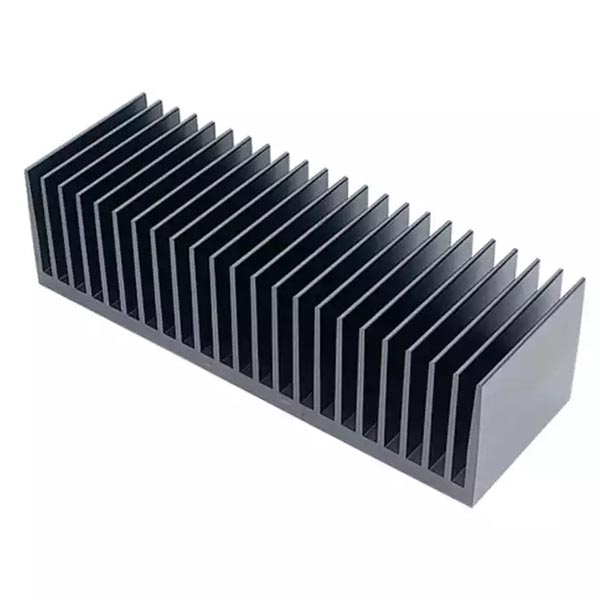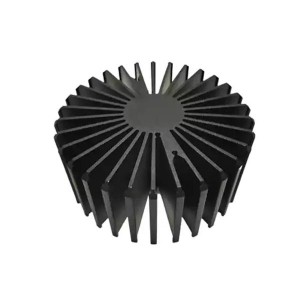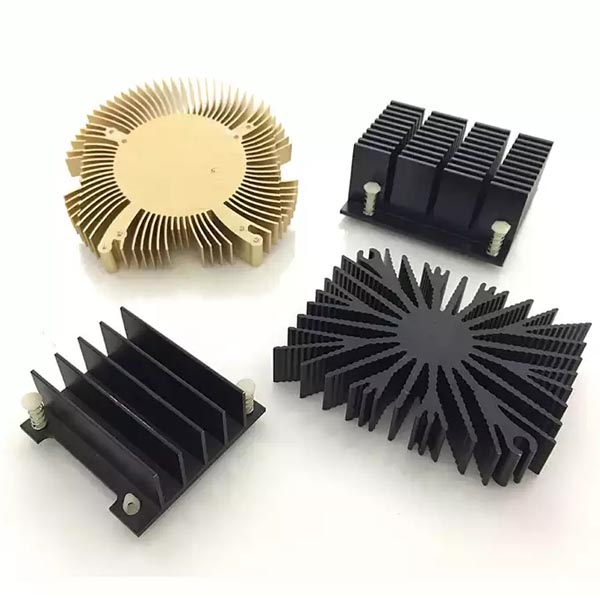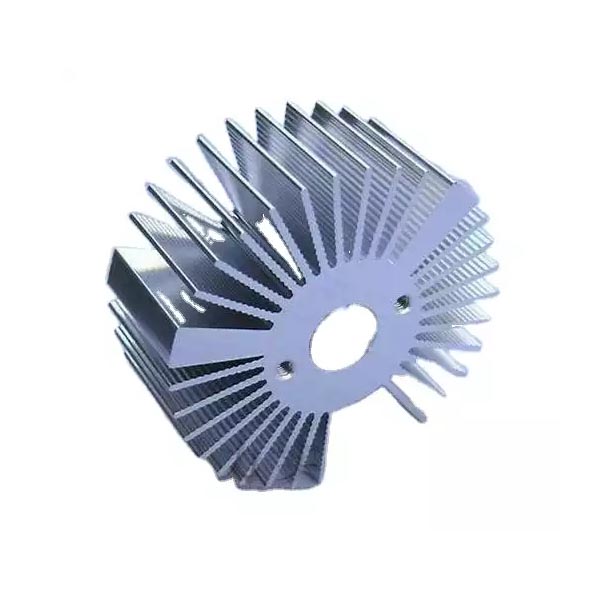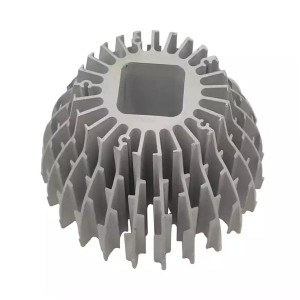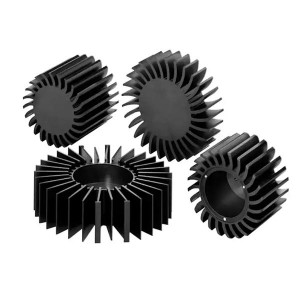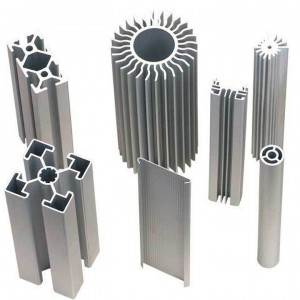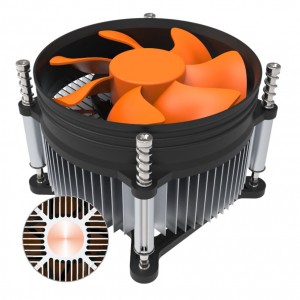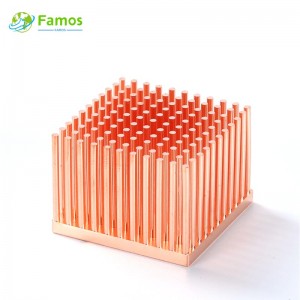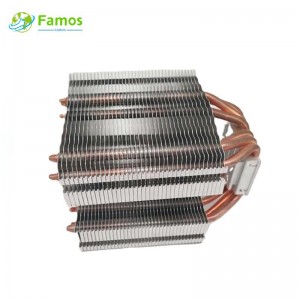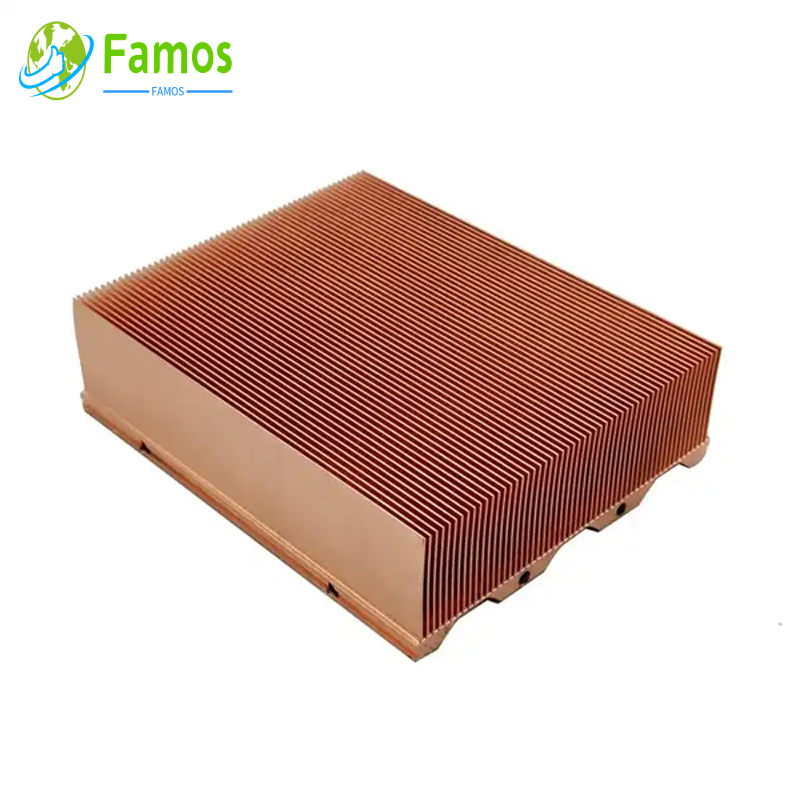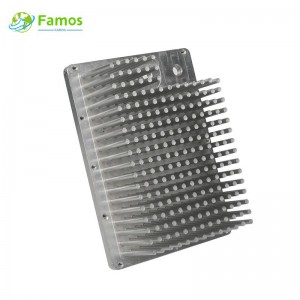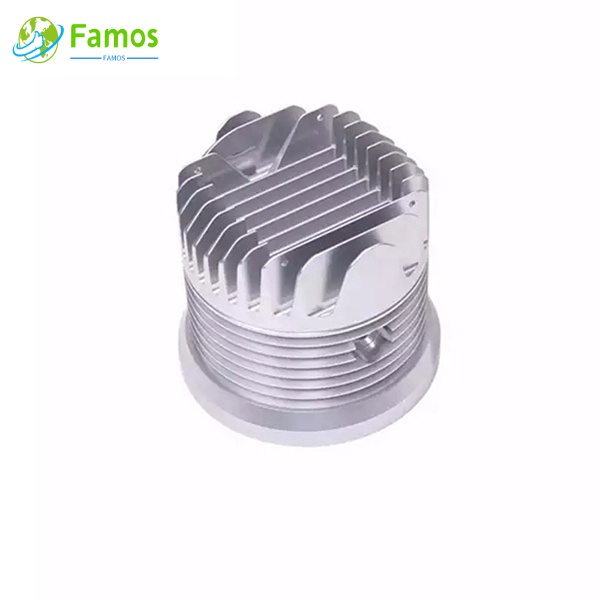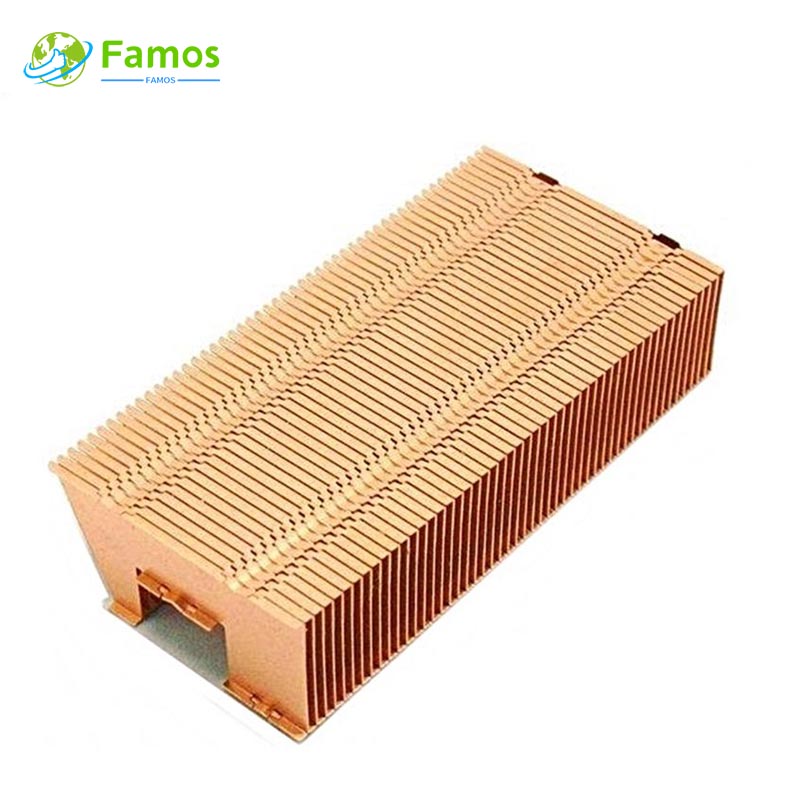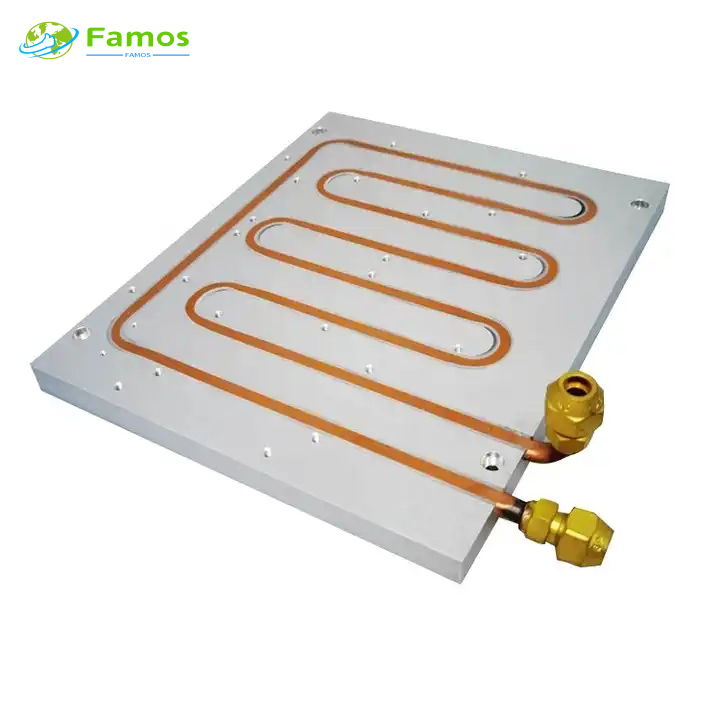Power Supply Inverter Heat Sink Custom | Famos Tech
Why the power supply inverter need heat dissipation?
1. Because the components in the power supply inverter have a rated operating temperature. If the heat dissipation performance of the power supply inverter is poor, when it continues to work, the heat of the components has been gathered in the cavity, and the temperature will be higher and higher. Too high temperature will reduce the performance and service life of components.
2. When the inverter works, the power loss is unavoidable, it is necessary to optimize the heat dissipation design to reduce the heat dissipation loss.
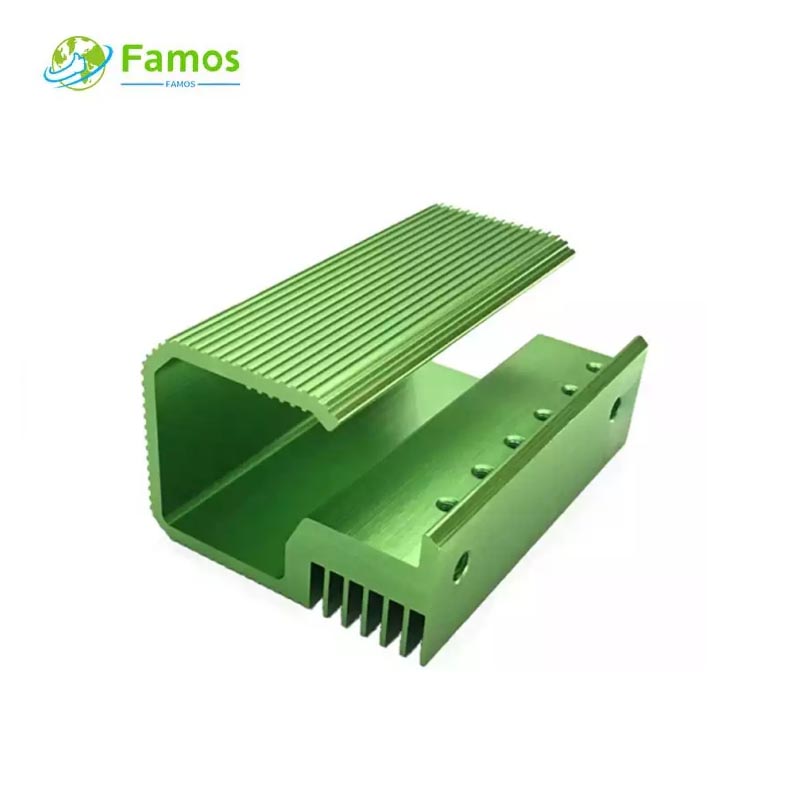
Power supply inverter heat dissipation ways
At present, the heat dissipation technology of inverter includes natural cooling, forced air cooling, liquid cooling, etc. The main ways are natural cooling and forced air cooling.
1. Natural heat dissipation: natural heat dissipation refers to letting local heating devices radiate heat to the surrounding environment without using any external auxiliary device to achieve temperature control. Natural heat dissipation is applicable to low-power devices with low requirements for temperature control.
2. Forced air cooling: The cooling method of forced cooling is mainly a method of taking away the heat emitted by the device by means of fans.
How to select proper cooling mode for power supply inverter?
Generally, the allowable operating temperature rise of electronic devices is between 40-60 ℃. Under the temperature rise of 60 ℃, natural cooling can bear the maximum heat flux of 0.05W/cm2. When the heat flow density is greater than 0.05W/cm2, forced air cooling is a good choice in terms of economy and performance.
If the heat flux continues to increase, liquid cooling and other heat dissipation methods are required
Power supply inverter heat sink design guide
1. The larger the heat dissipation area, the better the effect. The pleated design and multiple heat dissipation fins are used to increase the contact area between the air and the heat sink, so as to better and faster heat dissipation.
2. Overall air duct design: The outlet air duct ensures that the hot air flow can be discharged smoothly, and try to expand the air flow and flow rate through the hot fins of the heat sink, reduce air duct resistance.
3. Split cavity management: The heating components can be separated by the split cavity method, such as inductors, can be placed outside the inverter to reduce the temperature in the cabinet.
4. At the same time, the integral shell structure can be adopted. The heat sink is directly and tightly connected with the shell, allowing the aluminum alloy shell to dissipate heat through two paths, thus achieving the effect of reducing the temperature of the components and the internal temperature of the inverter, and ensuring the longer service life of the components and the inverter.
Get Fast Sample With 4 Simple Steps
Heat sink professional and reliable manufacturer
Famos Tech research and manufacture heat sinks over 15 years, each project we use thermal simulation software to analyse and optimize, the thermal condition of the system can be simulated more realistically by using simulation software, and the operating temperature of each component can be predicted during the design process, which can correct the unreasonable structure layout of the inverter, thus shortening the design development cycle, reducing costs, and improving the first-time success rate of the product
Famos Tech Is Heat Dissipation Expert
Famos focus on heatsink ODM & OEM for over 15 years, our heat sink factory customizes and wholesale bulk extruded aluminum heat sinks, designed and produced more than 5000 different shape heatsinks. If you have any heat sink requirements, welcome to contact us.



